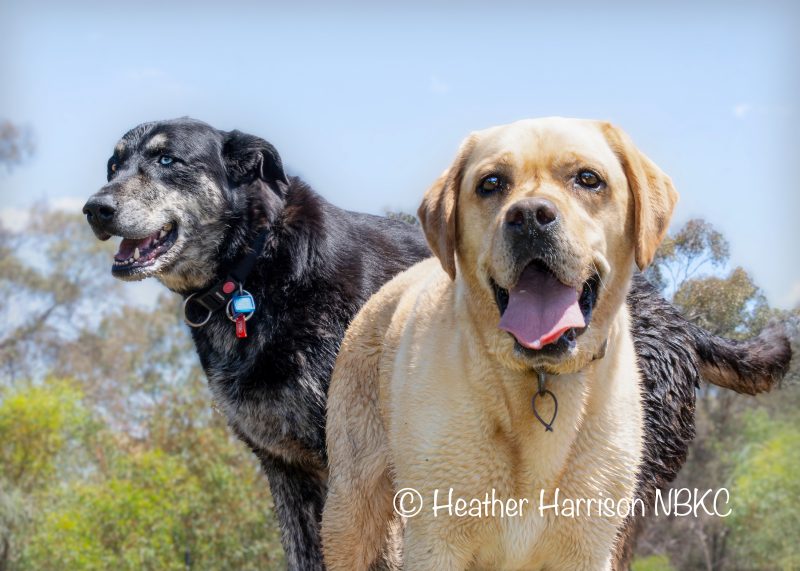Weight loss whilst boarding is quite common, and we aren’t immune to the phenomenon.
Customer expectations regarding weight retention can range from strict to ‘meh’. We take weight seriously and continually modify and adapt our services to ensure that weight stays put or, at the very least, remains within a healthy range.
Of course, slightly overweight hounds can benefit from being a little lighter upon departure—this is better for their overall health. We know that some canines will lose fat but gain muscle and cardiovascular condition—which is also a positive outcome. (I wish I could board to do that!). So, there are some counterbalancing factors involved when understanding customer expectations.
We provide premium-quality food; we don’t skimp on this, as we know how important nutrition is for our guests. We also have several calorie-intensive tricks up our sleeve to aid with calorie intake.

The burning factors
Every guest is unique and will burn calories in numerous ways.
Zooming around the yard for lengthy periods is the main factor; however, in addition to yard play, we also have cuisine-fussiness, excitement, vigilance, weather conditions, uncertainty, distractions, and stress. All of these factors can impact appetite and the digestive system.
Short Stays
Short-term boarders can miraculously drop weight; these dogs often deal with multiple factors (rather than one or two). Some dogs will take two or three days to ‘settle’ before eating, making weight slide off like jelly on a wall.
Long Stays
When dogs stay for extended periods, they are more prone to drop weight.
We strongly encourage active dog owners to include breakfast; otherwise, we cannot win the weight maintenance challenge.
Social butterflies burn more calories
Incremental weight loss can be visually challenging to detect—a little here, a little there until suddenly you see, ‘Ribs!’ This sneaking, gradual loss is very apparent to the owner when collecting the pet. After all, they remember how cuddly their pet was at drop-off.
The only way to truly understand a guest’s weight journey is to schedule free weight checks during their extended holiday. This removes the guesswork, and we can adjust ingredients and exercise accordingly to increase (or decrease) calorie intake.
We will also adjust yards (quieter friends) and enforce ‘quiet’ time (e.g. rest in the office during lunchtime) so that batteries can recharge.
We never ‘bulk’ up meals. Feeding larger portions to increase calorie intake is dangerous, as it can lead to gastric issues in dogs. Large meals can twist organs and be catastrophic if not caught quickly. Thus, we prefer quality over quantity. We will often add Greek Yoghurt, Sardines, Eggs, Coconut Oil, and higher-energy kibble to up the calorie content.
Adding breakfast is a fabulous way to provide extra calories and gut-manageable portions to avoid gastric concerns.
If ‘taste’ is a barrier, we try various options until we figure out what makes the taste buds ping. Some guests will not eat unless we hand-feed them. Yes, you read that correctly, and yes, we will.
Breakfast
Breakfast is an essential tool in our weight management crusade.
We don’t include breakfast in our standard fee because not all dogs need it; therefore, it is an option chosen by our customers. They must make a judgement call about their dog’s dietary requirements and add breakfast if required.
Selecting a daily breakfast for active pets makes our task far more manageable (and realistic). After all, maintaining weight on one meal per day in our environment is a tough gig.
During the booking process, customers can select the option to provide breakfast every second or third day (instead of daily)—this works well for many of our guests and allows a slight calorie burst every other day.
Kongs and rest time are another fabulous way to increase calorie intake and body rest.
Dietary Notes / Plans
We keep records of each guest’s dietary and nutritional requirements. These notes help us identify patterns in their behaviour and make adjustments accordingly. We expand upon and refer to these notes each subsequent visit.
We had a particular small dog who would hardly eat anything—until we found the perfect combo. Her feed notes now read: ‘Small handful kibble, a dollop of yoghurt, a spoonful of P100 wet and one sardine—moosh these together’. Success!
Discuss
If you have concerns about your dog’s weight, please don’t hesitate to contact us so we can discuss strategies to increase calorie intake or reduce playtime during their next visit.
